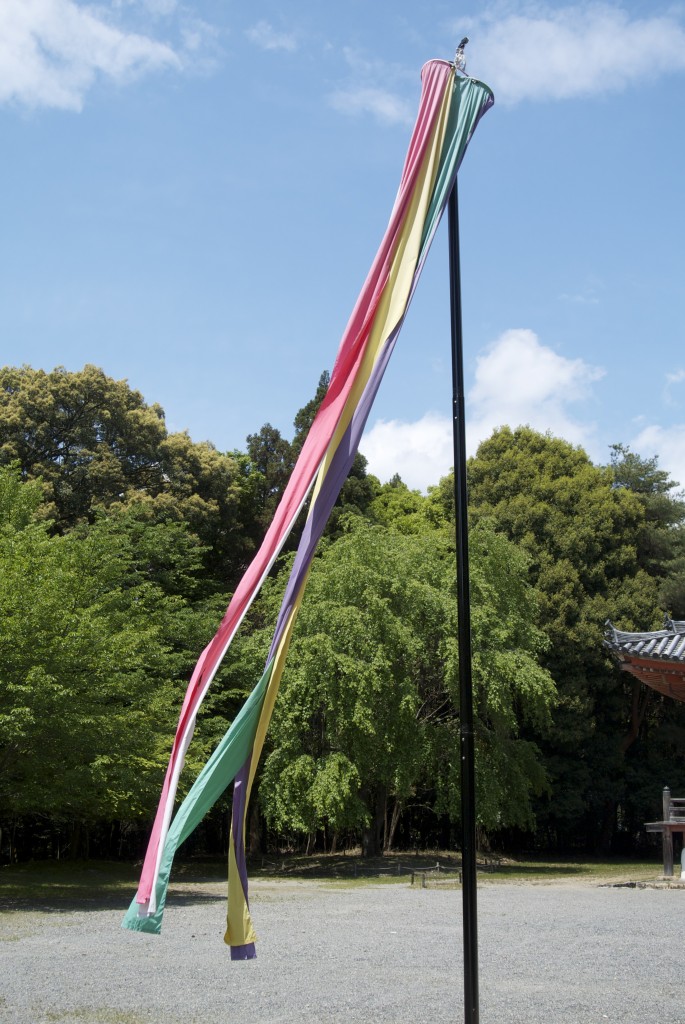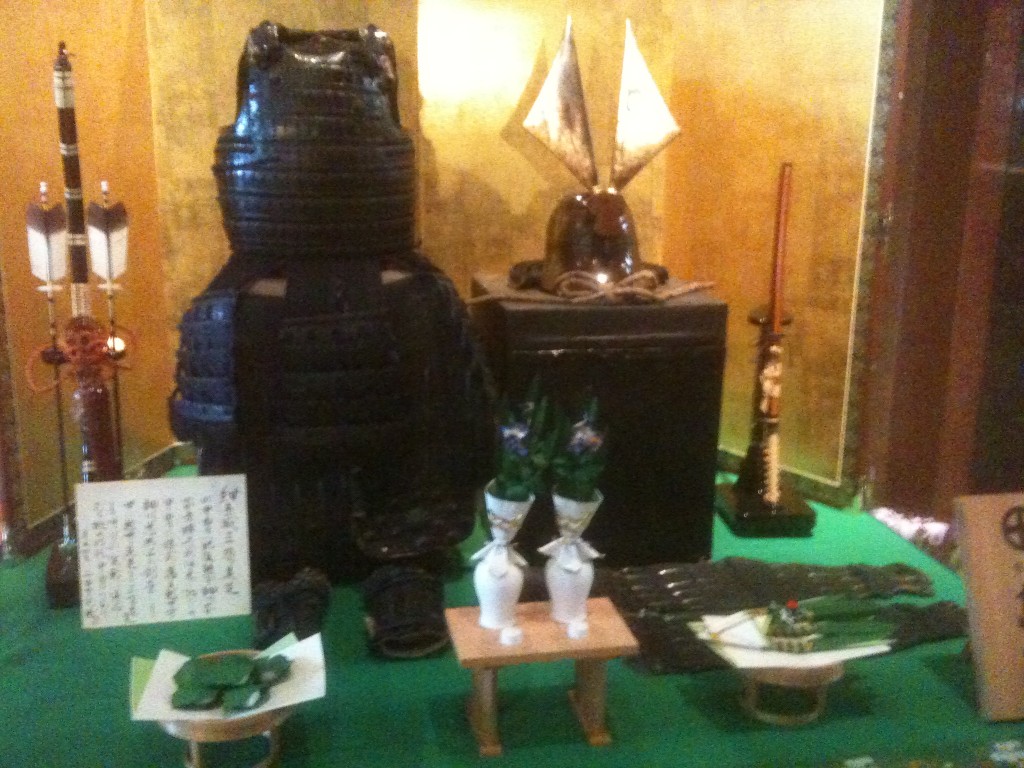
Carp flags flying in the wind, imitating fish swimming upstream to be a dragon
May 5 is Tango no Sekku (Children’s Day), though traditionally it is a Boy’s Festival. Sekku means a seasonal festival (there are five ‘sekku’ in the year), and Tango no Sekku was originally imported from China to drive away evil spirits on the 5th day of the 5th moon of the year.
In former times it involved hanging iris and/or mugwort under the eaves, and eating rice cake in oak leaves or chimaki (rice dumpling wrapped in bamboo leaf). Iris is shobu in Japanese, which sounds like competition (sho) and martial spirit (bu). It led to the day becoming associated with boys, and a doll adorned with armour and helmet was displayed in the house to wish for a strong and healthy future.
In Edo times the occasion became a celebration for the shogun having a son. Then in 1948 Tango no Sekku was established as a national holiday called Children’s Day, for the happiness and good fortune of all children.
The tradition is to fly koinobori (carp-shaped flags) for houses which have boys. (Girls Day is on March 3 – the odd numbers for the dates of celebrations deriving from Taoism.)
According to a Chinese legend, a carp that swims upstream becomes a dragon, and it is thought that the way the koinobori flags blow in the wind looks as if they are swimming, thereby promising good fortune for the young child. Family koinobori are colour-coded, with black at the top representing the father, red for the mother, and the rest for the children (one carp flag is added for each boy (or child) in the family).

Boy's festival display, with sword, armour, arrows, rice cakes, iris, rice cakes in oak leaves, chimaki rice dumplings, etc.

Thanks John-san for your many informative posts at Green Shinto. I’d like to add two things to your story on Boy’s Day. First, you should mention SHŌKI 鍾馗 – THE DEMON QUELLER. Shōki’s popularity peaked in Japan during the Edo period, when people began to hang images of Shōki outside their houses to ward off evil spirits during the Boys’ Day festival (Tango no Sekku 端午の節句, May 5 each year, but now a festival for all children of both sexes) and to adorn the eaves and entrances of their homes with ceramic statues of the deity. Today, Shōki is a minor deity relatively neglected or forgotten by most Japanese, except perhaps in Kyoto city, where residents still adorn the eaves and rooftops of their homes with Shōki’s effigy to ward off evil and illness, and to protect the male heir to the family. For details, see http://www.onmarkproductions.com/html/shoki.shtml
Second, about the carp transforming into a dragon and koinobori flags. I thought you might like to hear the full story about “The Carp Who Became a Dragon” The carp (Jp. = Koi 鯉) transforming into a dragon is a common artistic theme from old China. This theme is based on a Chinese legend (Jp. = Koi-no-Takinobori 鯉の滝登り) wherein carp swim, against all odds, up a waterfall known as the “Dragon Gate” at the headwaters of China’s Yellow River. The gods are very impressed by the feat, and reward the few successful carp by turning them into powerful dragons. The story symbolizes the virtues of courage, effort, and perseverance, which correspond to the nearly impossible struggle of humans to attain Buddhahood. In modern Japan, temples and shrines commonly stock their garden ponds with carp, which grow to enormous sizes in a variety of colors. Says JAANUS: Koi-no-Takinobori is the Japanese name for a Chinese legend of a carp that became a dragon after swimming up a waterfall at the headwaters of the Yellow River. This auspicious theme, a parable of effort and success, is linked to the Japanese Boys Day Festival (5th day of fifth month) when carp streamers (koinobori 鯉のぼり) are displayed. The theme was depicted in Edo period art, as for example in the painting by Maruyama Oukyo 円山応挙 (1733-95; Daijouji 大乗寺, Hyogo) or prints by ukiyo-e 浮世絵 artists.
Excellent information, Mark… many thanks for your input.